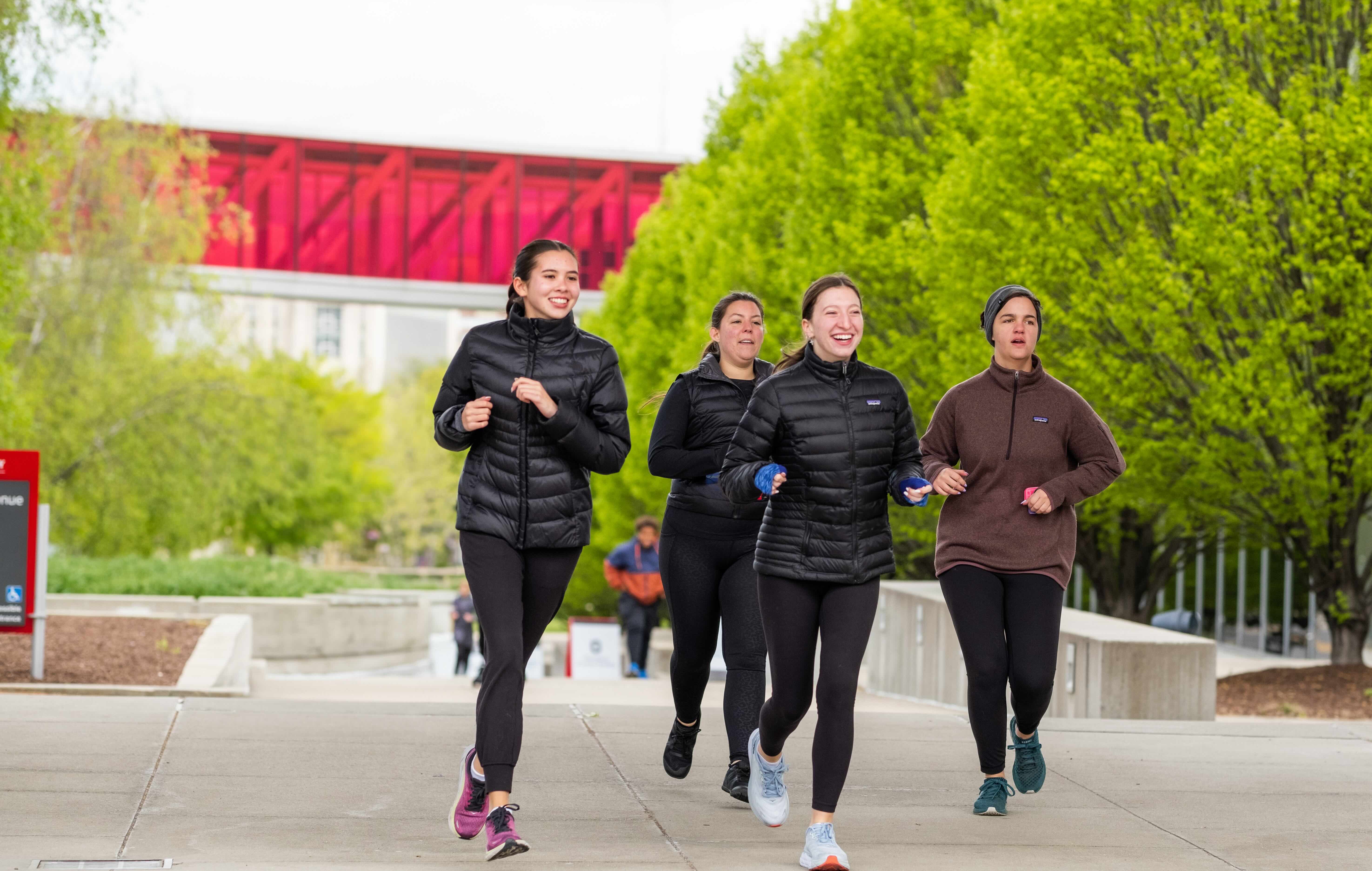
Listen to the accompanying episode of The Ohio State University Inspire Podcast.
The benefits are clear. Exercise reduces risk of heart disease, bone loss and cancer. It improves quality of life by increasing mobility and facilitating weight loss. And more than ever before, science reveals that exercise is invaluable for reducing stress, decreasing fatigue, combatting depression and promoting synaptic plasticity — making for more stable mental health and a more nimble brain.
So why are people so disinclined to do it?
“Exercise can be joyful,” said Carmen Swain, clinical associate professor of kinesiology in Ohio State’s College of Education and Human Ecology. “But it's not inherently joyful to all people.”
While exercise scientists have for years noted the “feel-better” effect of exercise, it often happens post-exercise, not during it.
Research shows there are two kinds of motivation for exercising, Swain said. Extrinsic motivation involves external rewards, such as looking better in an outfit or living up to societal fitness standards.
“Research shows that it's much more powerful for us long term to be successful in exercise if we can rely on intrinsic factors to motivate us,” Swain said — enjoying the freedom you feel when you bike a long stretch or the flush of victory when you nail a yoga pose.
Here are some expert tips for making exercise routine and making the routine stick.

Rewire your brain with tiny goals
“You want to set really small goals, so that you achieve them and are successful,” Swain said. “That makes people feel good, and you want to do it again.”
Walking is a great place to start. If you walk 5 minutes one day, walk 6 minutes the second day and 7 minutes the third. This effectively builds a neural pathway that allows you to solidify the exercise routine.
“In order to increase your intrinsic motivation … (so that) you like to exercise and you want to do it again … you need to change your brain. How are you going to change your brain? By setting really tiny goals and continually meeting them over and over again,” Swain said.
Dramatic changes to your routine might be appealing at the outset, but maintaining them can be very challenging to implement and to adhere to, said Brian Focht, professor of kinesiology and director of Ohio State’s Exercise and Behavioral Medicine Lab.
Focus on the process, not the outcome
“Oftentimes, we think about defining a very long-term, outcome-related goal,” Focht said. “We have less control over those outcomes, but we have more control over the process by which we're getting to that outcome.”
So instead of planning to run a 5K, plan to run a half-mile instead and build from there.
“By meeting, short-term, process-related goals — ultimately stringing those together leads to the long-term outcome goals,” Focht said.
Set a signal on your phone, make a plan, start small and make yourself do it.
Exercise outdoors
Research has shown that people tend to enjoy exercise more when they do it outside.
“The scenic environment and natural setting brings a sense of well-being and peace. …” Swain said. “When you combine exercise with that, people tend to really like that. So, they have this mood improvement related to being in a natural environment.”
A recent study also found that exercisers’ attention and working memory improved after a 15-minute walk outside, but not following a 15-minute walk indoors. Natural settings were more beneficial than urban settings. Other research shows that people perceive the same exercise to be easier outdoors, and more interesting.
“That’s pretty powerful and could lead to increased adherence,” Swain said.
But what about during winter?
According to the Mayo Clinic, exercising in cold weather is safe for almost everyone. But if you have certain conditions such as asthma, heart problems or Raynaud's disease, consult with your doctor first.
For most people, however, cold weather is not a reason to skip your workout. “You just bundle up,” Swain said. “You put on that extra layer, and you go outside. We all feel so much better for doing it.”
Buddy up
One of the best ways to hold yourself accountable is to exercise with a friend, research shows.
“People who go for a walk (with a friend) at lunch are much more likely to go for a walk than if you just plan to go by yourself,” Swain said.
Smart devices can help
Smartwatches provide immediate feedback by tracking your workout, pointing out benchmarks and congratulating you for the calories you burn.
“That gives you that little hit of satisfaction of achievement — that little dopamine hit,” Swain said. “I think it's really important, especially if you feel like you're somebody (who) needs some motivation.”
Choose the best exercise for you
Because he’s a kinesiologist, people ask Focht which kind of exercise is best to do.
“My standard answer: The best kind of exercise you can do is the one that you are willing to do or able to do regularly and consistently,” he said.
Focht’s research showed that weight resistance training worked as well as aerobic exercise to improve psychological well-being. Subsequent research has shown that any number of exercises — yoga, Tai Chi, walking, cycling and kick-boxing — offer mental health benefits.
“The degree to which you're able to do it, you're enjoying doing it, that's going to be the one that you're more likely to be consistent doing,” Focht said. “That's really, I think, the key to any kind of lifestyle change — whether it's your exercise, whether it's adopting healthier eating patterns. Consistency is always going to be the key.”
